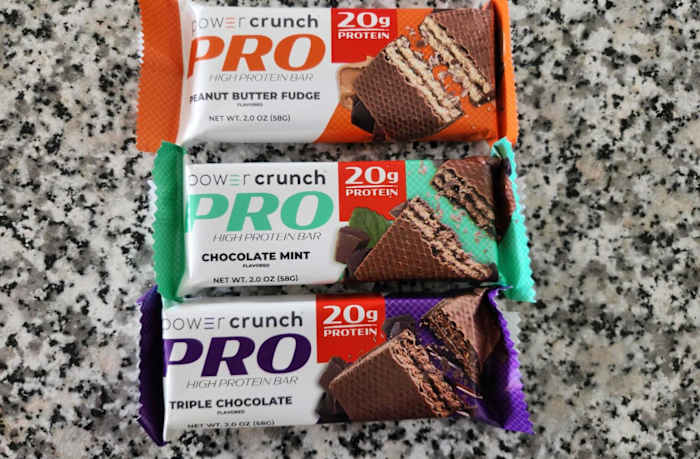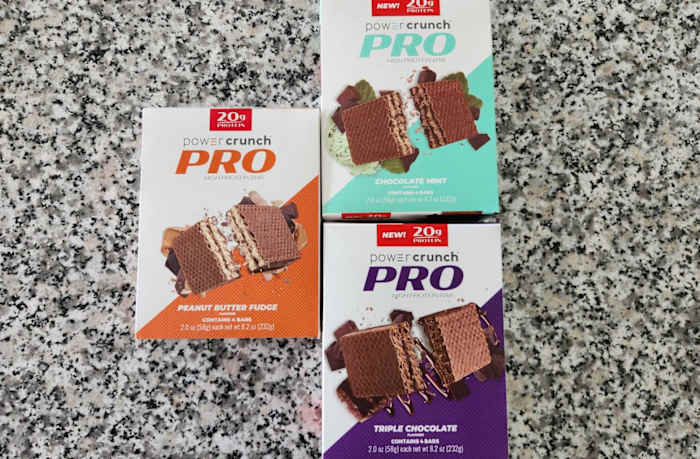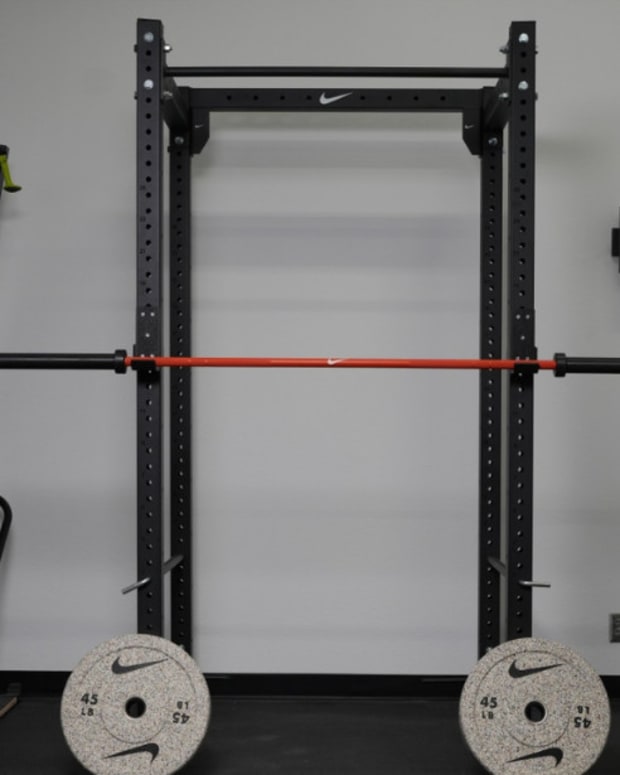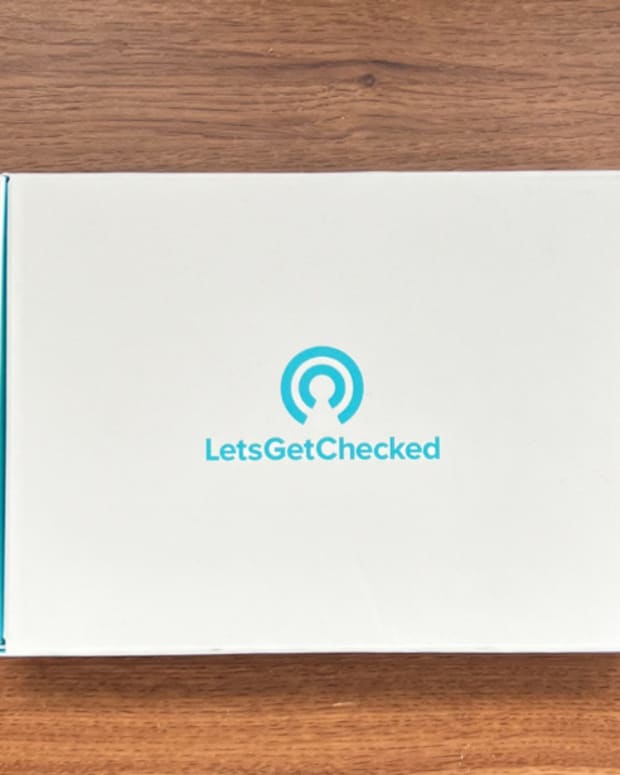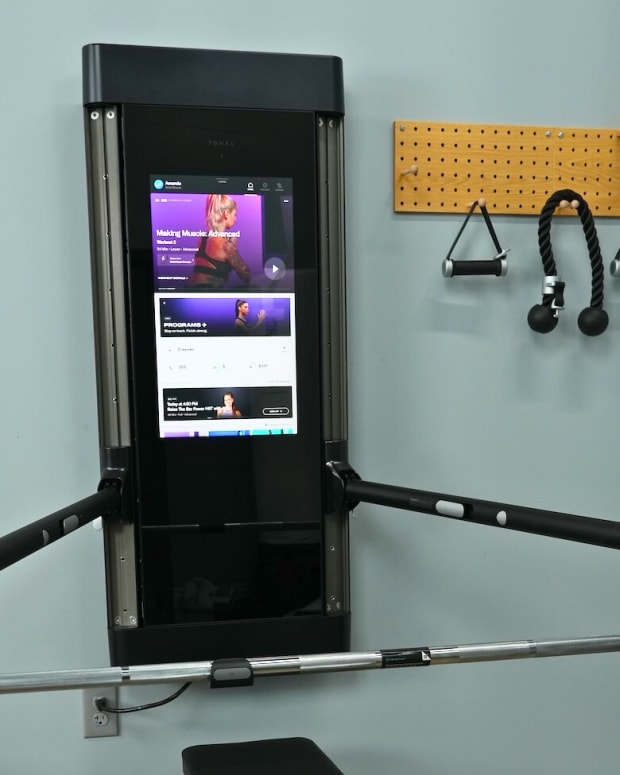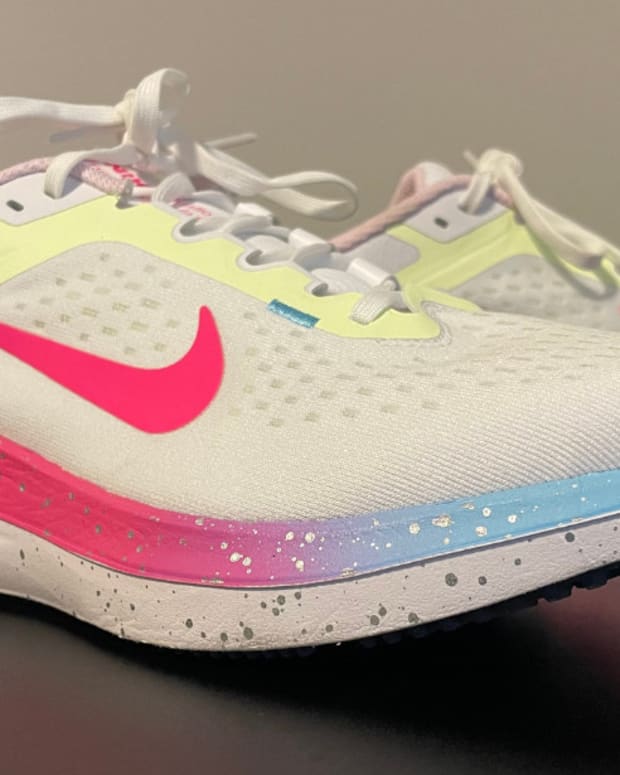The products featured in this article have been independently reviewed. When you buy something through the retail links on this page, we may earn commission at no cost to you, the reader. Sports Illustrated editorial staff are not involved in the creation of this content. Learn more here.
Power Crunch protein bars are anything but your typical high-protein snack. What sets them apart from the crowd is their exceptional texture, resembling a light and crispy wafer rather than a dense block of chewy, chalky protein. With an array of enticing flavor options, from Chocolate Mint to Wild Berry Creme, these bars aim to satisfy even the most discerning palates. But do they deliver on both taste and nutrition content?
In this comprehensive review, we will break down the key aspects of Power Crunch protein bars, scrutinizing their ingredient list, assessing the quality of their protein sources, analyzing the different flavors and considering both positive and negative customer reviews. Furthermore, we will provide insights into their suitability for different dietary preferences and how they can potentially help you achieve your personal health and fitness goals.
So, whether you’re a longtime Power Crunch fan or considering trying them for the first time, read on to discover if these bars deserve a spot in your regular snack rotation.
This content is meant to be informative, but should not be taken as medical advice. It is not intended for use as diagnosis, prevention or treatment of health problems. Always speak with your doctor before starting any new supplement or exercise regimen.
Power Crunch Bars At a Glance
- Unique wafer-like texture sets Power Crunch apart from more traditional dense and chewy protein bars
- Feature a fairly even distribution of protein, carbs and fats and range from 215 to 220 calories per serving
- Provides a decent protein punch, between 12 to 14 grams per serving depending on the flavor
- Suitable for individuals with bodybuilding or weight loss goals
Pros
- Convenient protein bar for on-the-go snacking or as a dessert replacement
- Available online via the Power Crunch website and Amazon, as well as major retailers such as Walmart, Target, Costco and most grocery stores
- Might be a better option than other bars for those on a lower-carb diet
- Budget-friendly price point of less than $2 per bar
- 14 unique flavors
- 15% subscribe and save discount available on Power Crunch website
Cons
- May have a lower protein content compared to other protein bars
- No vegetarian or plant-based protein bar options currently available
- Some flavors contain artificial sweetener sucralose, which may cause digestive issues in sensitive individuals
Power Crunch Bar Claims
Power Crunch protein bars aim to provide a tasty and convenient way for individuals to incorporate additional protein into their diets. Whether it’s for fitness and muscle recovery or simply as a satisfying treat, Power Crunch offers consumers a unique and enjoyable snacking experience.
What’s great about these bars is that they are designed for on-the-go consumption, making them a convenient choice for individuals with busy lifestyles. They can be easily carried in a gym bag, purse or backpack for a quick and satisfying snack whenever you need. The standout feature of the Power Crunch bars is definitely the texture—the brand emphasizes that its bars offer an airy and crunchy, wafer-like consistency, making them a more pleasurable alternative to conventional protein bars. Power Crunch bars are also available in a wide range of different flavors to cater to the brand's large audience. These flavors are meant to make increasing your daily protein consumption an appealing and enjoyable experience.
Quality of Ingredients
Ingredients
The ingredients found in Power Crunch protein bars vary slightly between the different flavor options available. I personally tested the Chocolate Mint flavor, so I will include its entire ingredient list below.
- Proto Whey protein blend (micro-peptides from high-DH hydrolyzed whey protein, whey protein isolate, milk protein isolate)
- Palm oil
- Enriched flour (wheat flour, malted barley flour, niacin, reduced iron, thiamine mononitrate, riboflavin, folic acid)
- Palm kernel oil
- Sugar
- Canola oil
- Cocoa processed with alkali
- Fructose
- Natural flavors
- Soy lecithin
- Maltodextrin
- Salt
- Stevia leaf extract
- Baking Soda
- Ammonium Bicarbonate
- Monk fruit
While this ingredient list may not be short, it is fairly typical of processed protein bars. I'll break down a few of these ingredients in more detail below.
The first thing to note is that the protein source used in Power Crunch bars is derived from whey, meaning these protein bars aren't suitable for individuals who follow strict vegan or vegetarian diets. You may also notice that Power Crunch uses ingredients like palm oil, palm kernel oil and canola oil in its formula. While these oils have been the subject of much debate and scrutiny regarding their potential health effects, it’s important to note that moderate consumption of these oils, as part of a balanced diet, may not necessarily be harmful to everyone. If you eat a relatively healthy diet primarily made up of non-processed whole foods, then consuming a Power Crunch bar shouldn’t be much of a concern. However, if a large amount of your diet is made up of processed foods, then you may want to incorporate more whole-food protein sources into your diet.
Finally, let’s discuss three other ingredients you may not be familiar with: maltodextrin, soy lecithin and ammonium bicarbonate. Maltodextrin is a carbohydrate that is often used in the food industry as a thickener, filler or preservative. This ingredient is classified as GRAS, meaning it is generally recognized as safe for consumption and is a source of rapidly digestible carbohydrates. Soy lecithin is used as an emulsifier and stabilizing agent in many processed foods and similar to maltodextrin is generally regarded as safe. However, if you have a soy allergy or sensitivity, you should be cautious when consuming products with this ingredient. Additionally, some people choose to avoid soy lecithin due to concerns about genetically modified organisms (GMOs), since most soybeans are genetically modified. Lastly, ammonium bicarbonate is a leavening agent often used in baking. It helps to contribute to the light and airy texture in baked goods such as the wafer-like consistency of the Power Crunch bars.
Nutrition Facts
The nutrition facts will vary slightly depending on the flavor of Power Crunch bar chosen.
| Calories | Protein (grams) | Carbs (grams) | Fat (grams) | Sugar (grams) |
|---|---|---|---|---|
215-220 | 12-14 | 10-13 | 13-15 | 5-8 |
What’s notable about Power Crunch protein bars is that they contain a fairly balanced ratio of protein, carbs and fats. This macro profile, in addition to the overall calorie count, leads me to say that Power Crunch is better classified as a meal replacement bar rather than a pure protein supplement. However, keep in mind that most protein bars usually have a higher carbohydrate content and a lower fat content. I would say these bars are well suited for individuals with athletic performance or muscle-building goals due to the additional calories. While this doesn’t mean that these bars won’t work for individuals pursuing weight loss, there are higher protein-to-calorie supplements available, such as a whey isolate protein shake, that may better help you achieve your goals.
Power Crunch Bar Flavors
Power Crunch bar flavors include:
- Red Velvet
- Cookies & Creme
- Strawberry Creme
- Salted Caramel
- Peanut Butter Fudge*
- Chocolate Mint*
- French Vanilla Creme
- Triple Chocolate*
- Chocolate Coconut
- Lemon Meringue
- Peanut Butter Creme*
- S’mores
- Wild Berry Creme
- Cinnamon Roll
*Note that the triple chocolate, peanut butter creme, peanut butter fudge and chocolate mint do not contain sucralose and instead are naturally sweetened with stevia and monk fruit extracts. These flavor options are ideal for individuals looking to eliminate artificial sweeteners from their diets.
Power Crunch Bars Cost
The Power Crunch original protein bars are priced at $21.99 per box, containing 12 individually wrapped bars. The price of each individual bar comes out to $1.83 per serving. This is a very budget-friendly price point, with a direct comparison being a 12-pack of Quest bars priced at $33.48, which equates to $2.79 per bar. That being said, these higher-priced bars often contain more protein per serving.
My Personal Experience with Power Crunch Bars
While I try to get the majority of my protein and calories from whole-food sources, protein supplements such as shakes and bars have been a great way to support my active lifestyle and ensure I meet my daily protein needs. That said, I’ve never been a huge fan of protein bars, only purchasing them as a last resort at a gas station, rest stop or airport while traveling. This is because most protein bars on the market are full of artificial ingredients, contain tons of added sugars and taste like chewy, chalky bricks of protein.
This is why I was pleasantly surprised when I bit into a Power Crunch bar and realized it was unlike any protein bar I’ve had before. The wafer-like texture was an awesome change of pace, with an airy and crunchy consistency rather than chewy and dense. I also enjoyed that the Power Crunch bars came in a wide array of flavors, which let me choose a classic, like Chocolate Mint, that I thought I would enjoy. I also liked that a handful of flavors, such as the Chocolate Mint, used stevia and monk fruit rather than sucralose. I thought the flavor was excellent and I’m excited to try a few others like Peanut Butter Fudge and Triple Chocolate in the future.
Overall, Power Crunch bars are a tasty and convenient snack option that I could see myself using either pre- or post-workout depending on my needs. While it does contain slightly less protein than I would usually look for in a protein bar, I like the fact that it contains a decent number of calories from carbohydrates and fats for when I need some energy before or after training. While they may not be suitable for everyone, I’ll definitely include Power Crunch bars as a regular part of my snack rotation.
Who Should Use Power Crunch Bars
Power Crunch bars are a suitable high-protein snack for a variety of individuals. Here is a list of some groups of people who might consider using Power Crunch bars as a supplement to their regular diet
Athletes and Gym-Goers
Power Crunch bars can be a convenient source of protein and energy for individuals who engage in regular physical activity. These bars are formulated to be consumed as a pre-workout snack for a quick energy boost, or as part of your post-workout recovery routine to aid in muscle repair and recovery. These bars can also help individuals with higher protein demands meet their daily protein needs to promote their muscle-building goals.
Busy Professionals
People with busy schedules who need a convenient and portable snack option may benefit from using Power Crunch bars to supplement their regular diet. They are easy to carry and can provide a quick and satisfying source of nutrition during hectic workdays.
Students
Students who are constantly on the go may find that Power Crunch bars come in handy as a quick and easy snack between classes or during study sessions. They are portable and non-perishable and can be easily stored in a purse or backpack.
Individuals with Weight Loss Goals
Some individuals can benefit from using Power Crunch bars as part of their weight management strategy, either as a snack between meals or as a way to curb cravings. These bars are sweet enough to satisfy your sweet tooth, while still providing a balanced ratio of protein, carbs and fats.
Who Should NOT Use Power Crunch Bars
While Power Crunch bars can be a suitable snack option for many individuals, there are certain instances in which you may want to avoid this product altogether. For example, Power Crunch bars contain ingredients such as soy, milk and wheat which may trigger allergic reactions in sensitive individuals. Power Crunch bars are also not suitable for individuals following strict vegan or vegetarian diets, as the protein included in these bars is derived from animal-based whey. In the end, dietary choices should be made based on your specific needs, health goals and any dietary sensitivities or allergies you may have. If you have any concerns about whether Power Crunch bars suit your diet, it’s always a good idea to seek guidance from a healthcare professional.
What Customers Are Saying About Power Crunch
The customer reviews on Power Crunch bars are generally very positive on both the Power Crunch website and other online distributors such as Amazon, where they have a 4.5 out of 5 star rating. Many of the reviews comment on the vast selection of different flavors and the great taste as the high notes of this product. One reviewer on Amazon wrote about the Peanut Butter Fudge flavor saying, “I love these bars, they taste just like a peanut Kit Kat!” While the negative reviews are few and far between, some people prefer to avoid these bars due to the use of the artificial sweetener sucralose, commenting on how the bars are just too sweet. Just be sure to remember that not every bar contains sucralose—the Peanut Butter Fudge, Peanut Butter Creme, Chocolate Mint and Triple Chocolate are all completely artificial ingredient-free.
About Power Crunch
Power Crunch was founded by former college football player Kevin Lawrence. Lawrence was inspired to create Power Crunch Bars after discovering the benefits of hydrolyzed whey protein. When Lawrence's son was an infant, he developed a sensitivity to large protein molecules found in most infant formula. With the help of biochemist and doctor friends, Lawrence experimented by using hydrolyzed whey protein instead of traditional whole milk proteins in baby formula mixes. The new combination healed his son's digestive issues. This is why the main ingredient in Power Crunch protein bars is an easily digestible hydrolyzed whey protein. What sets Power Crunch apart from the competition is its commitment to offering consumers a protein bar with an innovative wafer-like texture and a variety of delicious flavors. This distinct approach to protein bars has garnered a loyal following among athletes and fitness enthusiasts alike.
Power Crunch Bars vs Quest Bars
Quest Bars are one of the most popular protein bars on the market, featuring anywhere from 20 to 21 grams of protein per serving and 18 different flavor options. Compared to Power Crunch, Quest Bars contain an extra 6 to 8 grams of protein per bar. However, the amount of protein in each bar isn’t the only difference between these two products. Honestly, the consistency between Quest Bars and Power Crunch couldn’t be further apart. Quest Bars have a classic protein bar consistency, very dense and chewy, while Power Crunch bars are light, airy and crunchy. Which bar you choose will depend on your personal flavor and texture preferences, and whether you favor a bar with the extra protein.
Check out our Quest Protein Bar Review for more information.
Power Crunch Bar FAQs
Are Power Crunch Bars healthy?
Power Crunch bars can be a convenient source of protein and energy when consumed in moderation and as part of a nutrient-dense, whole-food diet. It’s important to consider the macronutrients and total number of calories in these bars to determine whether they align with your current health and fitness goals.
When should you eat a Power Crunch Bar?
The best time to eat a Power Crunch bar depends on your dietary goals. They can be a convenient snack before a workout if you need a quick source of energy and protein before training, or they can be consumed post-workout to assist in replenishing your muscle glycogen stores and providing protein for muscle recovery and repair. They are also a convenient on-the-go snack option if you’re in a rush and don’t have time to eat a full meal.
Are Power Crunch Bars good for diabetics?
Power Crunch Bars may not be the best option for individuals with diabetes because they contain ingredients like maltodextrin and added sugars, which can cause a rapid spike in blood sugar levels when consumed in large quantities. That being said, Power Crunch bars also contain a significant amount of fats and protein which will help slow the digestion of the carbs. If you have diabetes or are pre-diabetic, then I would definitely advise you to consult with a registered dietitian or your primary healthcare provider before adding Power Crunch bars to your diet.
Are Power Crunch Bars good for the keto diet?
It is generally recommended that individuals following the ketogenic diet consume less than 50 grams of total carbohydrates per day. If you think that adding a Power Crunch bar, which contains anywhere from 10 to 13 grams of carbs, to your diet won’t put you over this suggested carbohydrate limit, then I don’t think there is anything wrong with adding this snack to your current routine.
Can power crunch bars cause bloating?
As long as you don’t have any allergies or sensitivities to the ingredients in Power Crunch bars, then they should not cause any bloating. However, if you are sensitive to dairy, gluten or soy, then Power Crunch bars may not be the right option for you.
Do Power Crunch bars give you energy?
Yes, Power Crunch bars will provide both short and long-term energy as they contain a significant amount of carbohydrates and fats in addition to the protein. However, it’s important to note that the energy derived from Power Crunch bars is in the form of calories and will not provide an energy boost in the same manner as caffeine or other stimulants found in supplements like pre-workouts.
Takeaway: Are Power Crunch Bars Worth It?
Power Crunch protein bars can be a convenient and enjoyable snack option for individuals looking for something other than a conventional protein shake or bar to supplement their diet. However, like any processed food, these bars should be consumed in moderation and as part of a healthy, well-balanced diet. If you’re uncertain about whether they align with your specific nutritional needs, it’s a good idea to consult with a healthcare professional, such as a registered dietician or certified nutrition coach, who can provide personalized dietary guidance.
These statements have not been evaluated by the Food and Drug Administration. This product is not intended to diagnose, treat, cure, or prevent any diseases.
Prices are accurate and items in stock as of publish time.

